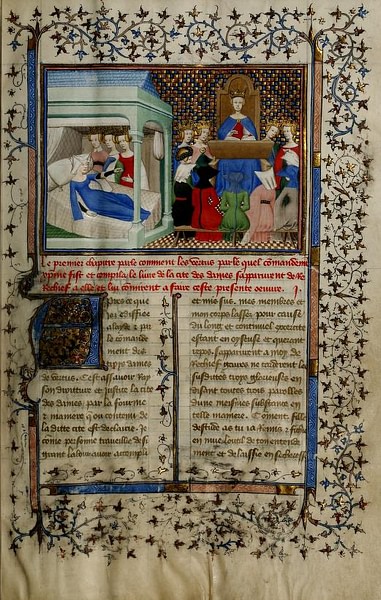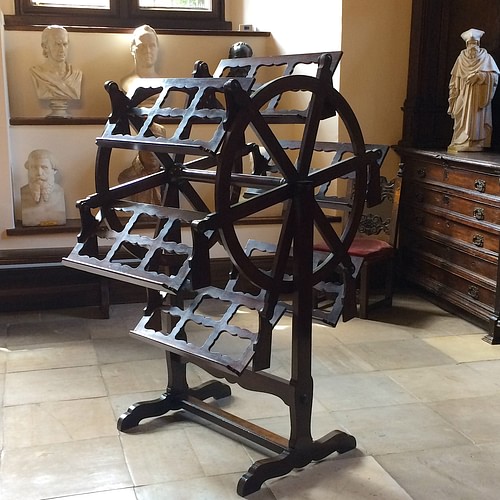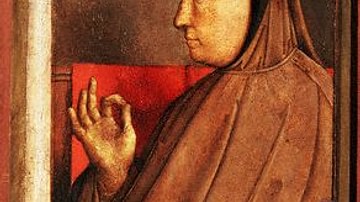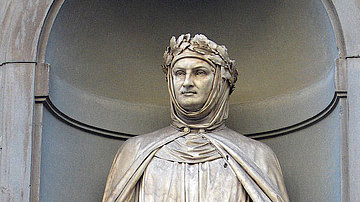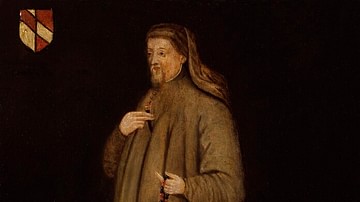The arrival in Europe of the printing press with moveable metal type in the 1450s CE was an event which had enormous and long-lasting consequences. The German printer Johannes Gutenberg (c. 1398-1468 CE) is widely credited with the innovation and he famously printed an edition of the Bible in 1456 CE. Beginning with religious works and textbooks, soon presses were churning out all manner of texts from Reformation pamphlets to romantic novels. The number of books greatly increased, their cost diminished and so more people read than ever before. Ideas were transmitted across Europe as scholars published their own works, commentaries on ancient texts, and criticism of each other. Authorities like the Catholic Church took exception to some books and censored or even burned them, but the public's attitude to books and reading was by then already changed forever.

The impact of the printing press in Europe included:
- A huge increase in the volume of books produced compared to handmade works.
- An increase in the access to books in terms of physical availability and lower cost.
- More authors were published, including unknown writers.
- A successful author could now earn a living solely through writing.
- An increase in the use and standardisation of the vernacular as opposed to Latin in books.
- An increase in literacy rates.
- The rapid spread of ideas concerning religion, history, science, poetry, art, and daily life.
- An increase in the accuracy of ancient canonical texts.
- Movements could now be easily organised by leaders who had no physical contact with their followers.
- The creation of public libraries.
- The censorship of books by concerned authorities.
Johannes Gutenberg
The invention of the movable metal type printer in Europe is usually credited to the German printer Johannes Gutenberg. However, there are other claims, notably the Dutch printer Laurens Janszoon Coster (c. 1370-1440 CE) and two other early German printers, Johann Fust (c. 1400-1465 CE) and his son-in-law Peter Schöffer (c. 1425-1502 CE). There is, too, evidence that movable metal type printers had already been invented in Korea in 1234 CE in the Goryeo Kingdom (918-1392 CE). Chinese Buddhist scholars also printed religious works using moveable type presses; the earliest ones used woodblocks during the Song Dynasty (960-1279 CE). Whether the idea of moveable type presses spread via merchants and travellers from Asia to Europe or if the invention by Gutenberg was spontaneous is still a point of debate amongst scholars. In any case, like most technologies in history, the invention likely sprang from a cumulation of elements, ideas, and necessity involving multiple individuals across time and space.
Gutenberg began his printing experiments sometime in the 1440s CE, and he was able to establish his printing firm in Mainz in 1450 CE. Gutenberg's printer used Gothic script letters. Each letter was made on a metal block by engraving it into the base of a copper mould and then filling the mould with molten metal. Individual blocks were arranged in a frame to create a text and then covered in a viscous ink. Next, a sheet of paper, at that time made from old linen and rags, was mechanically pressed onto the metal blocks. Gutenberg's success in putting all these elements together is indicated by his printed edition of the Latin Bible in 1456 CE.
The new type of presses soon appeared elsewhere, notably with two Germans, Arnold Pannartz (d. 1476 CE) and Conrad Sweynheym (aka Schweinheim, d. 1477 CE). This pair established their printing press in 1465 CE in the Benedictine monastery of Subiaco. It was the first such press in Italy. Pannartz and Sweynheym moved their operation to Rome in 1467 CE and then Venice in 1469 CE, which already had a long experience of printing such things as playing cards. There were still some problems such as the lack of quality compared to handmade books and the drab presentation in respect to beautifully colour-illustrated manuscripts. Also, there were sometimes errors seen in the early printed editions and these mistakes were often then repeated in later editions. However, the revolution into how and what people read had well and truly begun.
Printed Matter
There was already a well-established demand for books from the clergy and the many new universities and grammar schools which had sprung up across Europe in the late medieval period. Indeed, traditional book-makers had struggled to keep up with demand in the first half of the 15th century CE, with quality often being compromised. This demand for religious material, in particular, was one of the main driving forces behind the invention of the printing press. Scholars had access to manuscripts in private and monastic libraries, but even they struggled to find copies of many texts, and they often had to travel far and wide to get access to them. Consequently, religious works and textbooks for study would dominate the printing presses throughout the 15th century CE. It is important to remember, though, that handmade books continued to be produced long after the printing press had arrived and, as with many new technologies, there were people still convinced that the flimsy printed book would never really catch on.
The availability of things to read for people in general massively increased thanks to printing. Previously, the opportunity to read anything at all was rather limited. Ordinary folks often had little more than church notice boards to read. The printing press offered all sorts of new and exciting possibilities such as informative pamphlets, travel guides, collections of poems, romantic novels, histories of art and architecture, cooking and medicinal recipes, maps, posters, cartoons, and sheet music. Books were still not as cheap as today in terms of price compared to income, but they were only around one-eighth of the price of a handmade book. With printing matter being varied and affordable, people who could not previously do so now had a real motive to read and so literacy rates increased. Further, printed books were themselves a catalyst for literacy as works were produced that could be used to teach people how to read and write. At the end of the medieval period still only 1 in 10 people at most were able to read extended texts. With the arrival of the printing press, this figure would never be as low again.
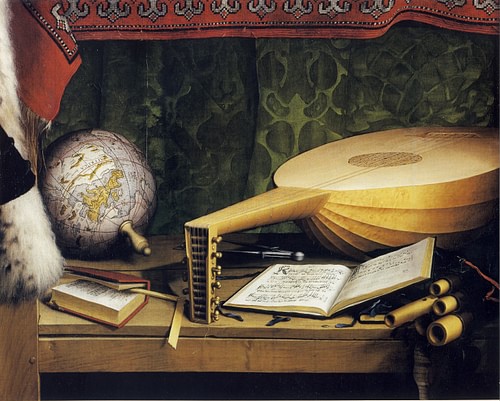
The Spread of Information
Soon, a new boost to the quantity of printed material came with the rise of the humanist movement and its interest in reviving literature from ancient Greece and Rome. Two printers, in particular, profited from this new demand: the Frenchman Nicholas Jensen (1420-1480 CE) and the Italian Aldus Manutius (c. 1452-1515 CE). Jensen innovated with new typefaces in his printing shop in Venice, including the easy-to-read roman type (littera antiqua/lettera antica) and a Greek font which imitated manuscript texts. Jensen printed over 70 books in the 1470s CE, including Pliny's Natural History in 1472 CE. Some of these books had illustrations and decorations added by hand to recapture the quality of older, entirely handmade books.
Meanwhile Manutius, also operating in Venice, specialised in smaller pocket editions of classical texts and contemporary humanist authors. By 1515 CE, all major classical writers were available in print, most in multiple editions and many as collections of complete works. In addition, printed classical texts with identical multiple copies in the hands of scholars across Europe could now be easily checked for accuracy against source manuscripts. Handmade books had often perpetuated errors, omissions, and additions made by individual copyists over centuries, but now, gradually, definitive editions of classical works could be realised which were as close as possible to the ancient original. In short, printed works became both the cause and fruit of an international collective scholarship, a phenomenon which would reap rewards in many other areas from astronomy to zoology.
There was, too, a drive to print more books thanks to the Reformists who began to question the Catholic Church's interpretation of the Bible and its stranglehold on how Christians should think and worship. The Bible was one of the priorities to have translated into vernacular languages, for example German (1466 CE), Italian (1471 CE), Dutch (1477 CE), Catalan (1478 CE), and Czech (1488 CE). Reformists and humanists wrote commentaries on primary sources and argued with each other in print, thereby establishing an invisible web of knowledge and scholarship across Europe. Even the letters written between these scholars were published. As religious and academic issues raged, so the debating scholars fuelled the production of yet more printed works in a perpetuating cycle of the printed word. Ordinary folks, too, were roused by arguments presented in printed materials so that groups of like-minded individuals were able to quickly spread their ideas and organise mass movements across multiple cities such as during the German Peasants' War of 1525 CE.
There were, too, plenty of works for non-scholars. As more people began to read, so more collections of poems, novellas, and romances were printed, establishing Europe-wide trends in literature. These secular works were often written in the vernacular and not the Latin scholars then preferred. Finally, many books included a number of woodcut engravings to illustrate the text. Collections of fine prints of famous paintings, sculptures, and frescoes became very popular and helped to spread ideas in art across countries so that a painter like Albrecht Dürer (1471-1528 CE) in Germany could see what Raphael (1483-1520 CE) was up to in Italy.
A Booming Industry
As a consequence of all this demand, those printers who had survived the difficult early years were now booming. Cities across Europe began to boast their own printing firms. Places like Venice, Paris, Rome, Florence, Milan, Basel, Frankfurt, and Valencia all had well-established trade connections (important to import paper and export the final product) and so they became excellent places to produce printed material. Some of these publishers are still around today, notably the Italian company Giunti. Each year, major cities were producing 2-3,000 books every year. In the first decade of the 1500s CE, it is estimated 2 million books were printed in Europe, up to 20 million by 1550 CE, and around 150 million by 1600 CE. There were over half a million works by the Reformist Martin Luther (1483-1546 CE) printed between 1516 and 1521 CE alone. Into the 16th century CE, even small towns now had their own printing press.
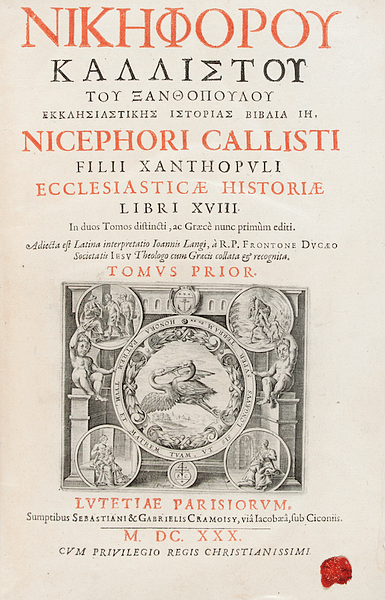
Besides established authors, many publishers helped new authors (men and women) print their works at a loss in the hope that a lucrative reprint run would finally bring in a profit. The typical print run for a first edition was around 1,000 copies although this depended on the quality of the book as editions ranged from rough paper pocket-sizes to large vellum (calfskin) folio editions for the connoisseur. The smaller size of most printed books compared to handmade volumes meant that habits of reading and storing books changed. Now a desk was no longer required to support large books and one could read anywhere. Similarly, books were no longer kept horizontally in chests but stacked vertically on shelves. There were even odd inventions like the book wheel on which several books could be kept open and easily consulted simultaneously by turning the wheel, especially useful for research scholars. As readers accumulated their books and built up impressive private collections, so many bequeathed these to their city when they died. In this way, within 50 years of the printing press' invention, public libraries were formed across Europe.
Printed works became so common, they helped enormously to establish the reputations, fame and wealth of certain writers. The Dutch scholar Desiderius Erasmus (c. 1469-1536 CE) is perhaps the best example, one of the first authors to make a living solely through writing books. There were, though, some threats to authors and printers. One of the biggest problems was copyright infringement because it was next to impossible to control what went on beyond a particular city. Many books were copied and reprinted without permission, and the quality of these rip-offs was not always very good.
Censorship & Printing the Wrong Books
All of these developments were not welcomed by all people. The Catholic Church was particularly concerned that some printed books might lead people to doubt their local clergy or even turn away from the Church. Some of these works had been first released in manuscript form a century or more earlier but they were now enjoying a new wave of popularity thanks to printed versions. Some new works were more overtly dangerous such as those written by Reformists. For this reason, in the mid-16th century CE, lists were compiled of forbidden books. The first such list, the 1538 CE Italian Index of Prohibited Books, was issued by the Senate of Milan. The Papacy and other cities and states across Europe soon followed the practice where certain books could not be printed, read, or owned, and anyone caught doing so was, at least in theory, punished. Further measures included checking texts before they were published and the more careful issuing of licenses to printers.
Institutionalised censorship, then, became a lasting reality of publishing from the mid-16th century CE as rulers and authorities finally began to wake up to the influence of printed matter. Authorities banned certain works or even anything written by a particular author. The De Revolutionibus Orbium Coelestium (On the Revolutions of the Heavenly Spheres, 1543 CE) by the Polish astronomer Nicolaus Copernicus (1473-1543 CE) was added to the forbidden list for putting the Sun at the centre of the solar system instead of the Earth. The Decameron (c. 1353 CE) by the Italian author Giovanni Boccaccio (1313-1375 CE) was added to the list because of its vulgarity. The works of Niccolò Machiavelli were added for his political cynicism.
The worst works singled out for censorship were burned in public displays, the most infamous being the bonfire of the 'vanities' orchestrated by Girolamo Savonarola, a Florentine Dominican friar, in 1497 CE. On the other hand, some works were eventually allowed to be published (or republished) if they were appropriately edited or had offending parts removed. Most printers did not fight this development but simply printed more of what the authorities approved of. There was certainly, though, an underground market for banned books.
Many intellectuals, too, were equally dismayed at the availability of certain texts to a wide and indiscriminate audience. The Divine Comedy (c. 1319 CE) by the Italian poet Dante Alighieri (1265-1321 CE) was thought by some to contain certain moral, philosophical, and scientific ideas too dangerous for non-scholars to contemplate. Similarly, some scholars lamented the challenge the vernacular language was posing to Latin, what they considered the proper form of the written word. The tide had turned already, though, and local vernaculars became more standardised thanks to editors trying to make their material more comprehensible to the greatest number of readers. An improved use of punctuation was another consequence of the printed word.
Another delicate area was instruction books. Printers produced trade manuals on anything from architecture to pottery and here again, some people, especially guilds, were not so happy that detailed information on skilled crafts - the original 'trade secrets' - could be revealed to anyone with the money to buy a book. Finally, the printed word sometimes posed a challenge to oral traditions such as the professionals who recited songs, lyrical poetry, and folk tales. On the other hand, many authors and scholars transcribed these traditions into the printed form and so preserved them for future generations up to the present day and beyond.
